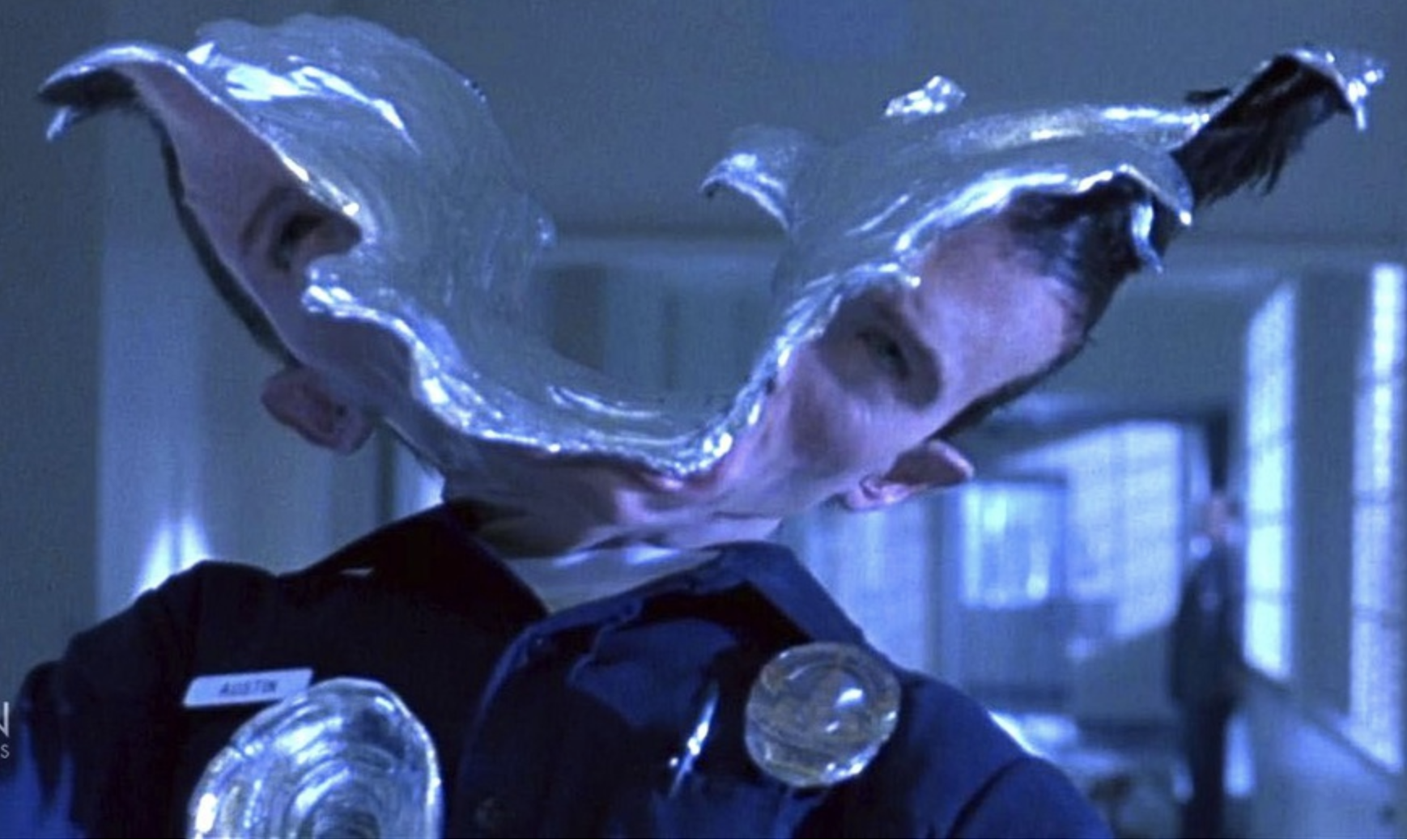TERMINATOR 2 Behind-The-Scenes Videos Feature Stan Winston's Cool T-1000 VFX Work on The Film
James Cameron’s Terminator 2: Judgement Day featured a lot of awesome innovation with filmmaking and VFX work. Not only with CGI effects but also with practical effects, which were all done by the talented team at Stan Winston Studios.
I was watching Terminator 2 again recently and I jumped online to see if I could find any behind-the-scenes stuff that I haven’t seen before, specifically in regards to the T-1000. I’ve shared some stuff on the site before featuring lots of “making of” stuff for Terminator 2, but I came across a couple of videos that I don’t recall seeing before, and I just want to share them here.
I came across the following videos on the Facebook page of Stan Winston school. The first video shows how they created the splash impact effect of the bullets when they hit the liquid metal:
Here’s a little explanation:
Among the T-1000 effects were appliances that would suggest the splash impact of bullet hits on the liquid metal man, first seen in an early sequence at a shopping mall, where the original Terminator fires on the T-1000.
To research the look, Winston and his crew spent weeks shooting pellets into mud, studying the patterns made by the impact, then duplicating them in sculpted form and producing appliances. Vacumetalizing slip rubber latex material, backed with soft foam rubber or polyfoam, achieved the chrome look.
The splash appliances were sculpted and produced in a variety of patterns and sizes and were fitted with an irising, petal-like spring-loaded mechanism that would open the bullet wounds on cue. This flowering mechanism was attached to a fiberglass chest plate worn by Robert Patrick — the actor portraying the T-1000 in his cop guise — under a prescored costume and was actuated by a single radio-controlled cable pin release. The pin’s release would open the petals, replacing that area of the costume with the chromed bullet splash.
This next video puts a focus on the splash head effect of the T-1000. You can read all kinds of details about how this effect was pulled off here.
It’s expained:
Studio artists sculpted Robert Patrick in clay, then split that clay sculpture down the middle and pulled it open, sculpting a ‘splash’ area into the middle of it. The foam rubber puppet was then made from molds of that sculpture. The puppet had a hinged fiberglass core that would spring open with the pulling of a single pin. The frontal view of ‘splash head’ (pictured above) required a more detailed puppet that featured eye mechanisms working independently on either side of the T-1000’s split face. Pulley mechanisms pulled the sides of the head toward the middle to suggest the beginning of the healing effect, which was finished off with ILM’s computer graphics.
Here are a couple other videos that I previously shared:
